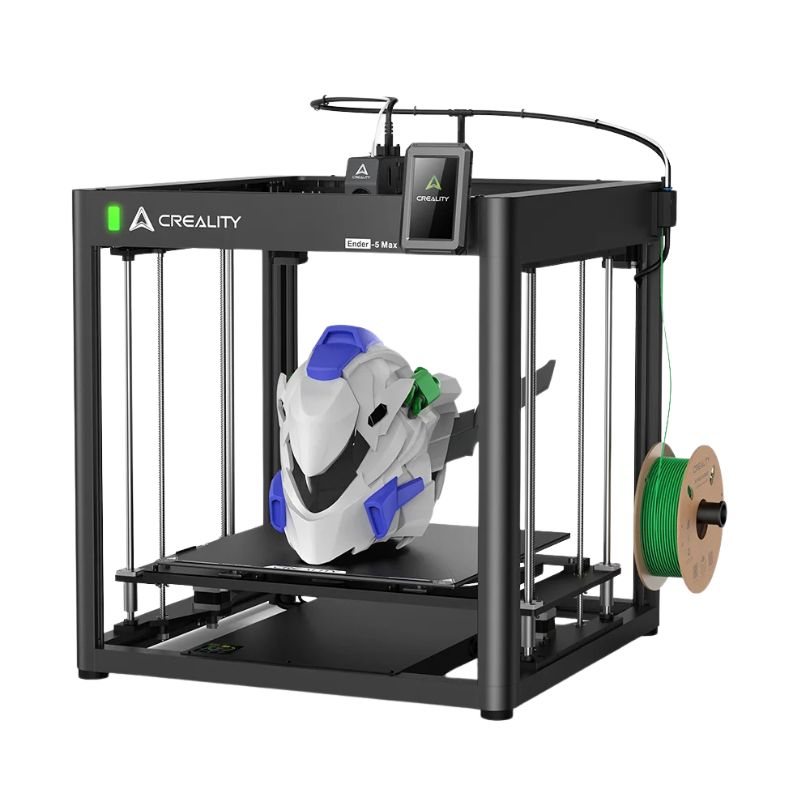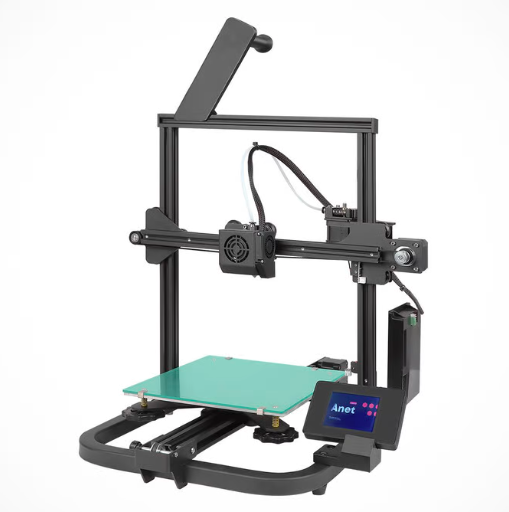Compare Ender 5 Max vs A8 V2
Comparison between the best 3D printers
Choose the best 3D printer at the best price. The cheapest 3D printers are here.
Buy a 3D printer here with 3D Fila.
 |
 |
|
| Model | Ender 5 Max |
A8 V2 |
| Printing Material | Filament | Filament |
| Buy Filament for Creality Ender 5 Max | Buy Filament forAnet A8 V2 | |
| Estimated price | $769,00 | $129,00 |
| Manufacturer | Creality | Anet |
| Release Year | 2025 | 2021 |
| Print Volume [mm] | 400x400x400 | 220x220x250 |
| Printer Size [mm] | 649x721x850 | 428x441x486 |
| Weight [kg] | 25,9 | 6,2 |
| Power Loss Recovery | YES | NO |
| Enclosed printer | NO | NO |
| Bed Leveling | Automatic | Manual |
| Filament End Sensor | YES | NO |
| Bed type | Heated | |
| Power supply system | Direct Drive | Bowden |
| Standard nozzle | 0,4 | 0,4 |
| Maximum Nozzle Temperature [°C] | 300 | 230 |
| Maximum Bed Temperature [°C] | 100 | |
| Maximum printing speed [mm/s] | 700 | 150 |
| Filament holder | YES | YES |
| Camera for supervision | YES | YES |
| Recommended filaments | Hyper PLA/PLA/PETG/TPU95A/ABS/ASA/PLA-CF/PA/PLA-Silk | PLA |
| Recommended slicers | Creality Print 5.1 | Cura, Simplify, Slic3r, IdeaMaker |
| Maximum Resolution [mm] | 0,1 | 0,1 |
| Processor | ||
| Display | Touchscreen 4,3'' | Display touchscreen 2,8'' |
| Power Supply | 1250 W | 110/220V / 250W |
| Connectivity | USB, Wifi | SD / USB |
| Operating systems | Windows | Windows, Mac, Linux |
| Date of registration in the system | 2025-02-18 | 2022-11-10 |
| Release date | 2025 | 2021 |
| Extra features | The Ender 5 Max by Creality features a 400 x 400 x 400 mm build volume, a rigid aluminum frame, and 36-point auto bed leveling. With speeds up to 700 mm/s, it boasts a hardened dual-gear extruder and a 1000W heated bed, reaching 80°C in just 200 seconds. It supports remote management via WLAN, a tri-color status indicator, and quiet operation, making it ideal for high-precision, high-productivity 3D printing. | The Anet A8 V2 is a Cartesian-XZ type 3D printer with a build volume of 220 x 220 x 250 mm, Ender 3 design and V-slot assembly. It has a 32-bit motherboard and touchscreen interface, promising ease of use. It uses open source firmware and has thermal failure protection. It stands out for its cable organization and the absence of a heated bed, focusing on energy savings and PLA printing. It comes with an external power adapter, aiming at greater safety, especially for beginners and educational use. |
| Support for multiple colors and materials (AMS and CFS) | NO | NO |
Notes * |
||
| Cost-benefit | 7 / 10 | 6 / 10 |
| Hardware | 5 / 10 | 0.6 / 10 |
| Tela | . | . |
| Print volume | 4 / 10 | 3 / 10 |
| Performance | 6 / 10 | 1 / 10 |
Conclusion |
| In comparing the Ender 5 Max and the Anet A8 V2, it becomes evident that both 3D printers cater to different segments of the market with distinct advantages and drawbacks. The Ender 5 Max, positioned at a higher price point, offers significant benefits in terms of build volume, print speed, and advanced features. With a generous build capacity, it is designed for more extensive projects and can handle a wider variety of materials. Its features such as automatic bed leveling, filament end sensor, and power loss recovery make it a robust choice for intermediate to advanced users who require reliability and precision in their prints. Additionally, the touchscreen interface and Wi-Fi connectivity enhance user experience and convenience. On the other hand, the Anet A8 V2, with its lower price, serves as an entry-level 3D printer suitable for beginners or educational environments. Its more compact build volume and basic features limit its capability compared to the Ender 5 Max. However, its affordability and ease of use, particularly with its manual bed leveling and straightforward assembly, attract users new to 3D printing. While it does not offer advanced features like power loss recovery or automatic leveling, it compensates with an open-source platform and thermal protection, emphasizing safety and simplicity. In conclusion, if budget permits and the user aims for versatility and high performance in 3D printing, the Ender 5 Max clearly stands out as the superior option. Conversely, for those just starting out in the hobby or looking for a straightforward, cost-effective solution, the Anet A8 V2 remains a viable choice. Ultimately, the decision should align with the user's specific needs, whether for advanced projects or basic printing tasks. |

